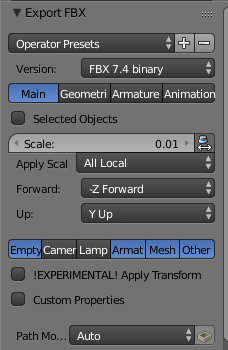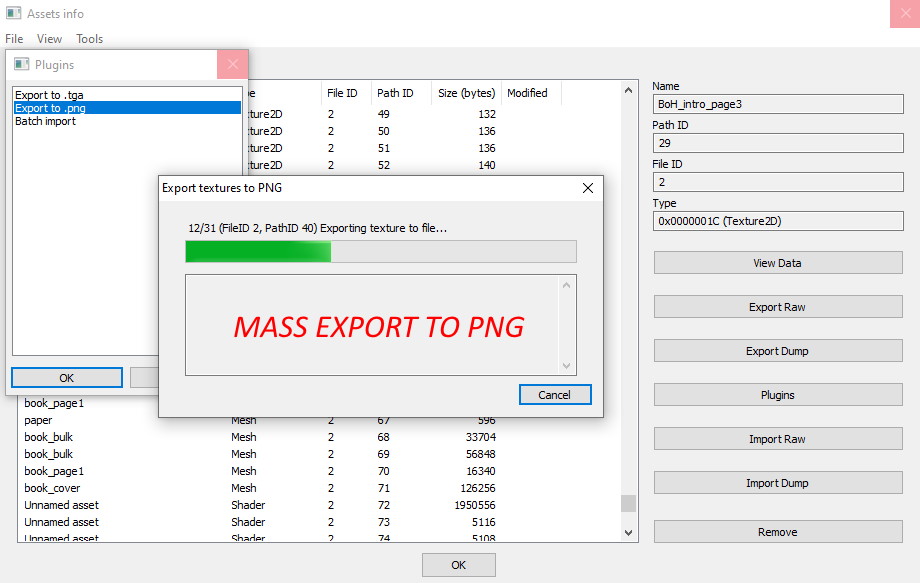

- #Unity assets bundle extractor export to obj install
- #Unity assets bundle extractor export to obj archive
- #Unity assets bundle extractor export to obj code

Click Import Dump, save level1 in game root folder, close Unity Assets Bundle Extractor and move level1 in My Summer Car\mysummercar_Data\. Open trigger.txt in Notepad++, you can use coordinates from position.txtġ4. Search Unnamed asset with Path ID number 28392, select it and click Export Dump, save it in game folder with name «trigger».ġ3. Depending on how they are created, they can be compressed or uncompressed. Asset bundles are meant to be created from a set of assets and then loaded into your application. However youre not really meant to edit them in the first place. But see the other answer for a solution that might work. Again click View Data and find first PathID. Unity does not support any functionality to do this. If you want to change position another part – you need search files with «trigger» in middle of name.ġ1.
#Unity assets bundle extractor export to obj install
After change installed position, you can change trigger position(a place in where possible install part). X – left/right by pivot, Y – forward/ backward by pivot, Z – up/down by pivot.

Open position.txt in Notepad++, edit LocalPosition coordinates. Sort by Path ID and search Unnamed asset with Path ID number 31822, select it and click Export Dump, save it in game folder with name «position».ħ. The asset bundle is loaded via new I then iterate through each Object and attempts to save. This version has been edited for clarity and may appear different from the original post.6. In the following Unity Package, I attempt to load an Asset Bundle that contains a fairly complex particle system. This post is originally published by the author here.
#Unity assets bundle extractor export to obj archive
This object contains a map of all of the file paths of the assets you added to this archive to the objects that belong to that asset that need to be loaded when you ask for it.
#Unity assets bundle extractor export to obj code
Second is the actual asset bundle object you interact with via code to load assets from a specific archive. The resource files are just chunks of binary data stored separately for certain assets (textures and audio) to allow us to load them from the disk onto another thread efficiently. The serialized file contains your assets broken out into their individual objects and written out to this single file. These additional files consist of two types: the serialized file and resource files. The archive can be thought of as a container, like a folder, that holds additional files inside of it.

This we call the asset bundle archive, or just archive, for short, in this document. Good question, actually “asset bundle” can refer to two different, but related things.įirst is the actual file on disk. For efficient delivery over networks, asset bundles can be compressed with a choice of built-in algorithms depending on use case requirements (LZMA and LZ4).Īsset bundles can be useful for downloadable content (DLC), reducing initial install size, loading assets optimized for the end-user’s platform, and reducing runtime memory pressure. a material in Asset Bundle A can reference a texture in Asset Bundle B. Are you wondering how you can make asset bundles in Unity 3D? You're in the right place!Īn asset bundle is an archive file containing platform specific assets (Models, Textures, Prefabs, Audio clips, and even entire Scenes) that can be loaded at runtime.Īsset bundles can express dependencies between each other, e.g.


 0 kommentar(er)
0 kommentar(er)
